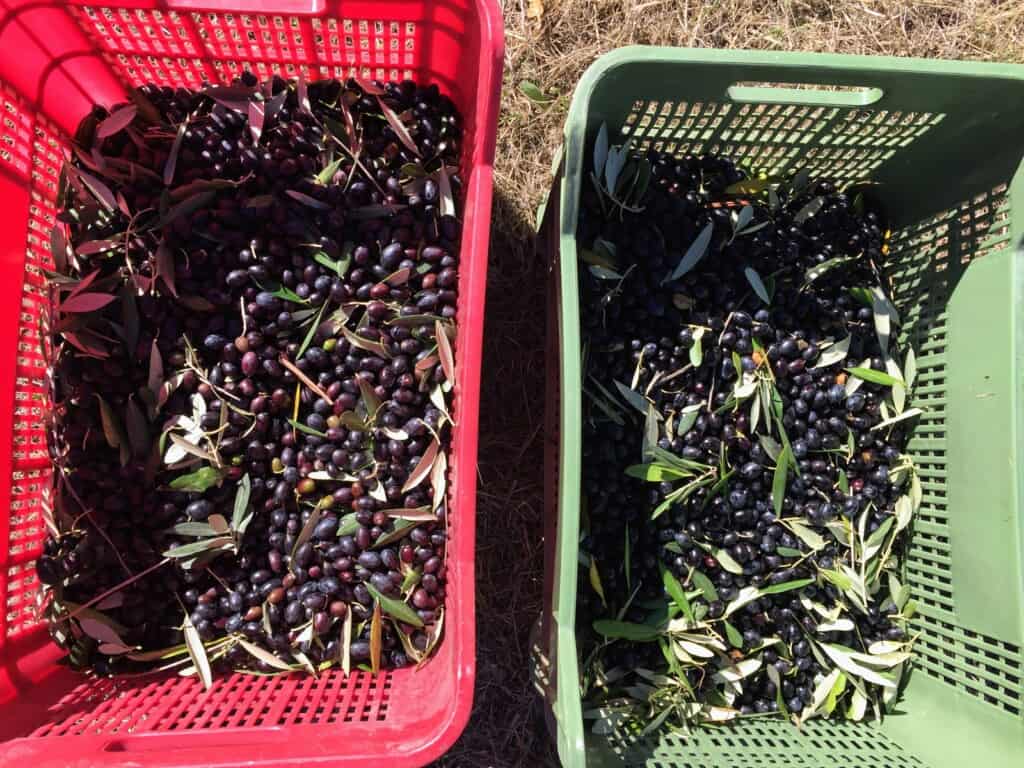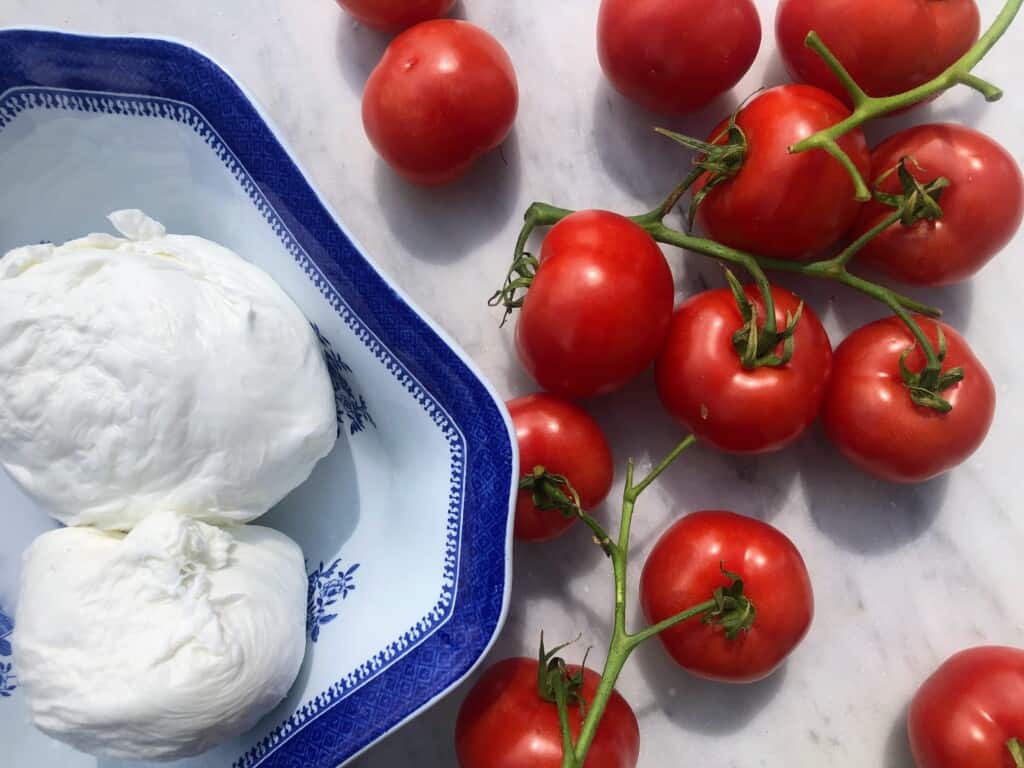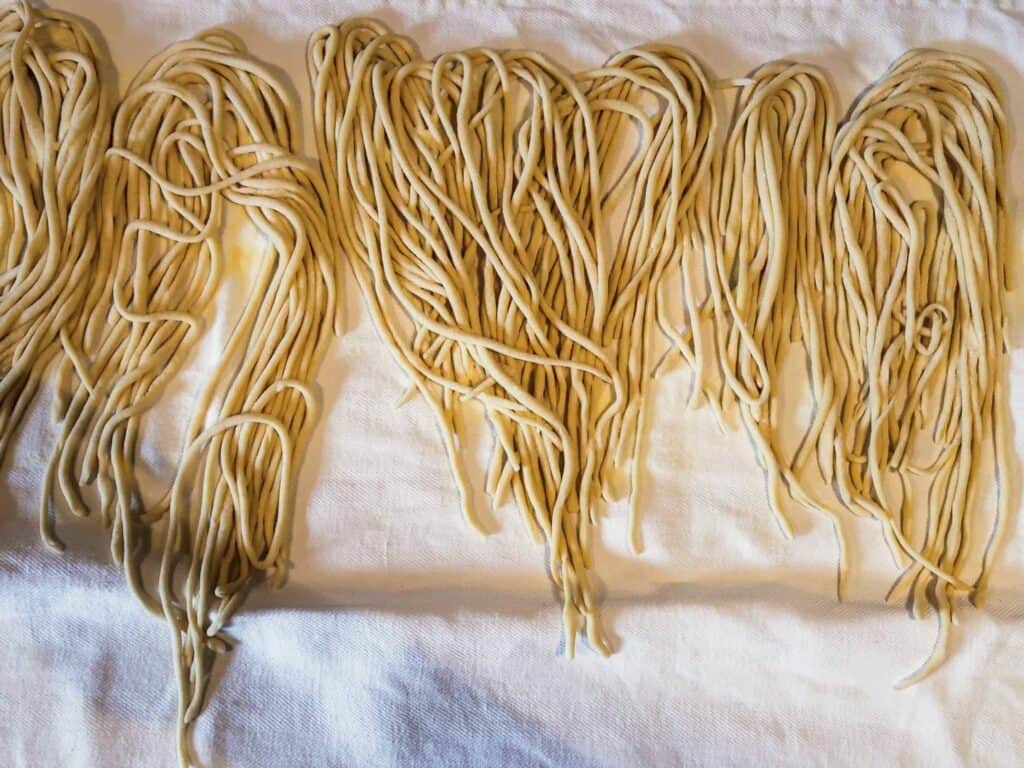Last updated on November 6th, 2023
If there is one ingredient that defines Italian cooking from north to south, east to west, and from the mainland to the seaside it is extra virgin olive oil. It’s an incredibly huge part of the culture – from the love and care that is put into growing the olives and the time invested in harvest, to the family tradition of enjoying olio nuovo (newly pressed oil) and to recipes passed down from generation to generation.
Learn to eat and cook just like a true Italian by understanding how olive oil is used in everyday cooking from me, someone who has been cooking side-by-side with my Italian family and friends for over a decade now.
Jump to Section
Why Do Italians Use Extra Virgin Olive Oil?

Olive oil profoundly affects the texture, flavor, and color of the food whether it is served raw, stewed for hours or quickly sauteed. It adds depth and character to Italian cooking while allowing other main ingredients to shine brightly.
For example, carpaccio, an appetizer made from thin slices of raw meat, either red meat or fish, is only made better with just a drizzle of the best extra-virgin olive oil and a squeeze of lemon juice. If you were to serve that same carpaccio with any other oil or even no oil at all, it wouldn’t be the same.
One of Italy’s simplest styles of cooking, la cucina povera, is made rich and flavorful by olive oil and has historically been an important ingredient from a nutritional point of view as it provided poorer folks with the calories they needed.
And not only. Olive oil is also very good for you and has been linked to longevity and good health. Italians generally consume around 4 tablespoons of extra virgin olive oil per day, which seems like a lot but it really isn’t when you learn to drizzle it on just about anything!
Let’s look at how Italians cook with olive oil:

Italians Drizzle Olive Oil
The absolute best way to eat olive oil is raw – by drizzling it over foods that are ready to eat. Raw olive oil has a rich flavor and bold characteristics that die out when cooked so if you are looking to really grow your appreciation for extra virgin olive oil then do as the Italians do best and drizzle it on almost everything before digging in. The best of the best olive oil is saved for drizzling purposes.
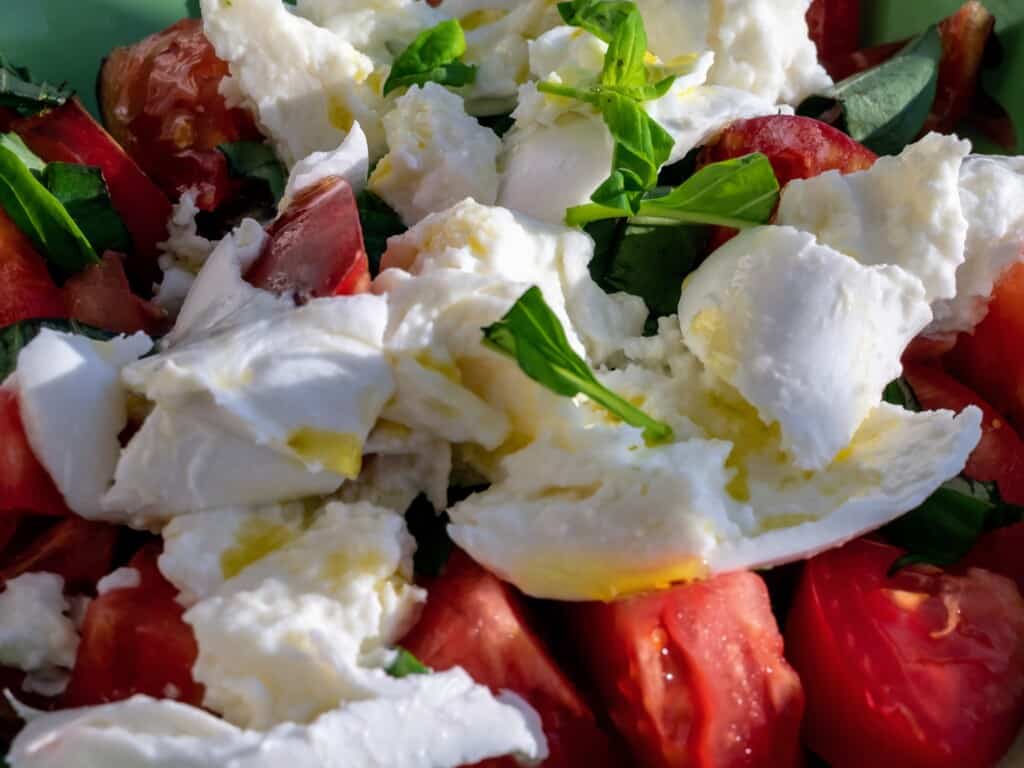
- Bruschetta
- Fettunta
- Salads
- Caprese
- Boiled or raw vegetables
- Boiled potatoes
- Carpaccio
- Soups
- Pasta
- Steamed rice
- Raw or cooked seafood
- Grilled Meats
- Grilled vegetables

We Recommend: Picking up an olive oil dispenser in Italy to keep your olive oil the freshest the longest time possible. And read up on How to Store Olive Oil! And try making your own rosemary infused olive oil!
Italians Sautée with Olive Oil
Most Italians primarily use olive oil as their oil of choice when sautéeing food in a skillet whether it be vegetables or meat. In fact, they often use a large amount of oil (a bit too much for my taste) so that there is plenty of sughino (oily sauce) at the bottom of the pan to mop up with the help of bread.
- Any vegetable: zucchini, carrots, cherry tomatoes and peppers work exceptionally well.
- Soffritto: this is the base for so many Italian sauces and main dishes made from finely chopped onions, carrots and celery slowly fried in olive oil.
- Meat: a fette or in slices of beef, chick and pork is sautéed in a skillet with olive oil and various flavors such as herbs, garlic, lemon, capers, anchovies, etc.
Tip: Make up a huge batch of soffritto and freeze it into small portions so the next time you want to make a quick tomato sauce, pot roast or stove-top chicken or pork dish, just pull out your small serving of soffritto and half the work is already done for you! For step-by-step instructions for making soffritto read Italian Soffritto – Step-by-step instructions + how to use it
Italians Roast with Olive Oil

Any roast meat that you eat in Italy will be done with lots of olive oil because it gives great flavor and holds up well to high oven temperatures (butter burns a lot more easily). The trick to roasting well is to use plenty of olive oil – don’t hold back! All the oil mixed with the drippings from the roast makes for a good amount of sauce to go around and share when cooking larger pieces of meat or even just a roast chicken.
- Potatoes
- Vegetables
- Pork
- Chicken
- Beef
- Fish
- Meatballs
Tip: Don’t get hung up on using the best oil you have, just use olive oil and save the extra-virgin for drizzling.
Italians Pan Fry with Olive Oil
Some nonne (grandmothers) still deep fry with olive oil but generally speaking Italians don’t fry with olive oil like they used to in the past. Now they buy other oils that aren’t so heavy and don’t weigh the food down such as peanut or sunflower oil.
Instead, many Italians pan-fry in olive oil which keeps the food crisp, and gives it flavor yet you don’t run the risk of ending up with heavy, soggy, deep-fried food that doesn’t feel light and crisp.
- Chicken cutlets
- Breaded pork cutlets
- Fish filets
Italians Bake with Olive Oil
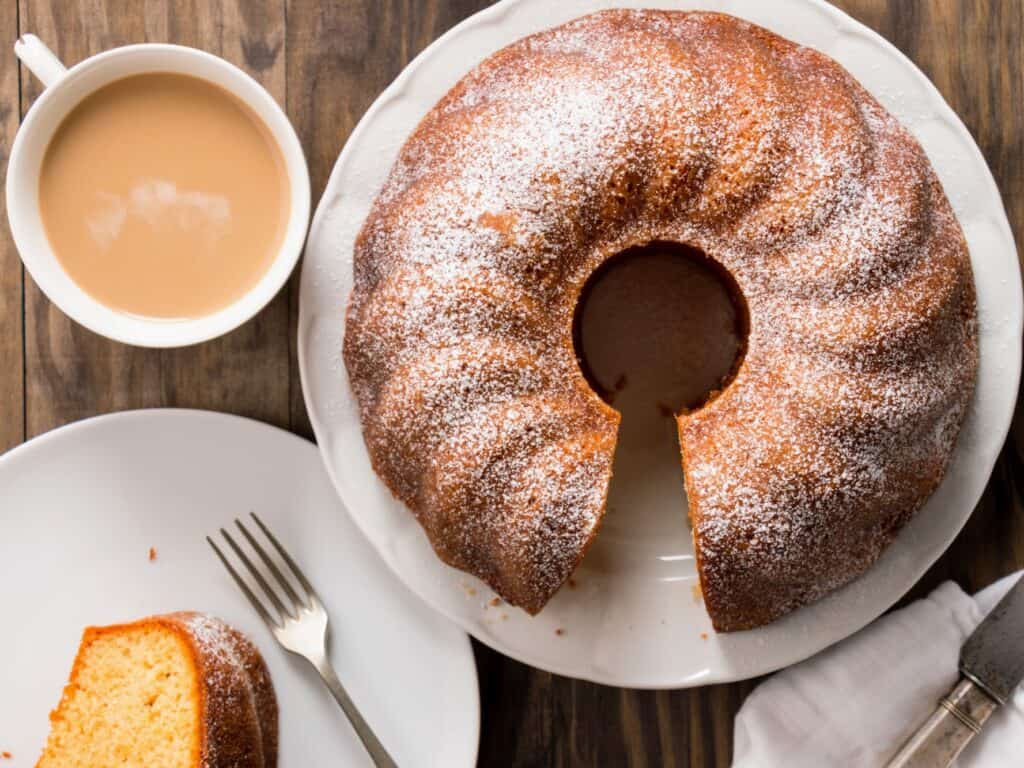
For many casalinga (homemade) simple cakes and cookies, Italians use olive oil instead of butter, especially in central and southern Italy. This is because historically that is what women had available to them at a low cost. Nowadays, butter is used more commonly, especially in northern Italy; however, many Italians still prefer the traditional baking method with olive oil. It also affects the baked goods’ taste, giving them a deeper and richer flavor.
- Plain cookies – simple cookies made often for eating at breakfast
- Ciambella – a plain cake in the shape of a ring commonly eaten at breakfast
- Torta semplice – simple cake without frosting
Substitution Tip: Substitute ¾ of the butter with olive oil when baking next time. If a recipe calls for 8 tablespoons of butter, use 6 tablespoons of oil.
Olive Oil Substitutes in Italian Cooking
While olive oil is used throughout Italy it’s much more widespread in central and southern Italy while in the north, Italians tend to use much more butter. Butter has its time and place: it gives flavor, creates crispy crusts, makes creamy sauces with less risk of separating and finishes rich dishes like no other.
In recipes in which you are pan frying such as veal cutlets, you can absolutely substitute olive oil for butter but in recipes where the goal is to achieve a creamy texture or sauce such as in risotto or in pastas that use cream, we don’t suggest substituting olive oil for butter. You can swap in olive oil when sautéeing anything, no matter what fat the recipe calls for.
As previously mentioned, Italians use oils with no flavor such as canola or peanut oil for frying. We don’t suggest you deep fry with olive oil as it makes the food heavy and can take away from the flavor of whatever is being fried.
Lard is used in many old, traditional recipes still made in the Italian countryside such as in a pancake type of bread called ciafagnone.
In baking, you can absolutely substitute olive oil for butter but be aware of what you are trying to achieve. Stick to recipes that don’t ask you to cream the butter and sugar because you won’t achieve the same consistency with oil. Brownies, muffins or simple cakes such as vanilla, chocolate or orange cakes are good places to start.
How Italians Cook With Olive Oil FAQ
This is a term you will hear in Italy and it means using a piece of bread to soak up what is left over on your plate, oftentimes olive oil that the meat or vegetables were cooked in. This is one place where using your hands to eat is acceptable in Italy!
No, they typically don’t. Some people believe that it keeps the pasta from sticking together, but this is a myth. Adding oil will only make your pasta slippery, making it harder for the devious sauce you made to stick to the pasta. To keep the pasta from sticking, just be sure to stir it every couple of minutes and use a large pot of water!
They don’t always use extra virgin olive oil but for the most part, they do. When Italians say olio d’oliva they meanextra virgin because that is what is most commonly sold. Olive oils that are not extra-virgin are often exported to other countries that have a better market for them so they aren’t as widely available as extra-virgin olive oil is in Italy.
Yes, of course you can. You can drizzle oil out of almost anything as long as you are careful not to dump it on. If you are pouring out of a bottle, just cover part of the top with your thumb, preventing the olive oil from coming out too quickly.
Yes, it will add flavor, and reduce the risk of burning and the amount of saturated fat!
